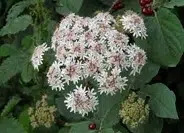 The etymology of inflorescence leads us to the Latin word inflorescens , in turn derived from inflorescĕre (which can be translated as “to be covered with flowers” ). The concept is used in the field of botany to refer to the arrangement of flowers on a plant .
The etymology of inflorescence leads us to the Latin word inflorescens , in turn derived from inflorescĕre (which can be translated as “to be covered with flowers” ). The concept is used in the field of botany to refer to the arrangement of flowers on a plant .
Let us remember that a plant is an autotrophic living being that does not have locomotor capacity. Flowers , for their part, are shoots made up of colorful leaves: these are reproductive structures that produce seeds.
The inflorescence is the distribution of flowers at the end of a stem or on the branches. There are inflorescences with a single flower (called uniflorous inflorescences ) and others with two or more flowers ( plurifloral inflorescences ).
In the case of uniflorous inflorescences, they may be axillary inflorescences or terminal inflorescences . Pluriflorous inflorescences are differentiated between simple and compound ones (according to the existence, or not, of a common axis ) and between zymose or closed ones (which have defined growth) and racemose or open ones (with indefinite growth).
While simple inflorescences can be described as a common axis that has uniflorous branches when the main axis has lateral multifloral ones. Depending on the shape and development of said axis, we can distinguish between racemose and cymose. The two types can consist of elementary inflorescences such as a raceme that groups other racemes or a spike with several spikes (in this case we speak of a homogeneous inflorescence ).
If, however, they are composed of elements of a different nature, we can distinguish two groups: if they are of the same type, they are called heterogeneous inflorescences ; Otherwise, they are called mixed inflorescences . When the pluriflora looks like a single flower , as in the compound chapter, they are known as pseudonthus .
Returning to the clustered or open inflorescence, it is a type of inflorescence in which the meristems at the tips of the axes do not alter their activity throughout their growth . In addition, all its flowers grow on the sides and its rachis develops indefinitely. In the case of cymose inflorescences, however, flower production consumes the apical meristems of the axes.
Special inflorescences , on the other hand, are rare. In this type of inflorescence, the branching of the floral axis does not show a particular pattern .
 In short, the inflorescence can be understood as a system that has a main axis called rachis , which usually carries bracts (leaves with special characteristics); Flowers emerge in the axils of the bracts. The rachis, in turn, is linked to the stem of the plant through the peduncle ; A pedicel , meanwhile, supports each flower.
In short, the inflorescence can be understood as a system that has a main axis called rachis , which usually carries bracts (leaves with special characteristics); Flowers emerge in the axils of the bracts. The rachis, in turn, is linked to the stem of the plant through the peduncle ; A pedicel , meanwhile, supports each flower.
There are certain well-defined differences between the inflorescences and the remaining part of the vegetative stem, among which we can highlight the following:
* its growth is limited and its life ends when it has been able to reproduce, while the vegetative stem grows unlimitedly;
* Generally, the buds of the inflorescence transform into branches, which is why it is very common for them to exhibit complex branching. The buds of the vegetative stem, on the other hand, do not undergo any changes;
* There are differences between its leaves, both in their color, shape and size. The name they receive is bracts , mentioned above, and their function is to protect the reproductive branches;
* the time it takes for the inflorescence to complete its branching is much less;
* Inflorescences have elements such as branches or stems with leaves that produce flowers in their axils. The stem is called the axis of the inflorescence, and it can give rise to other axes.
